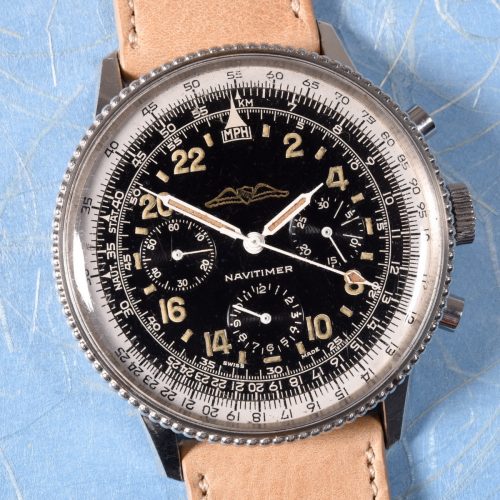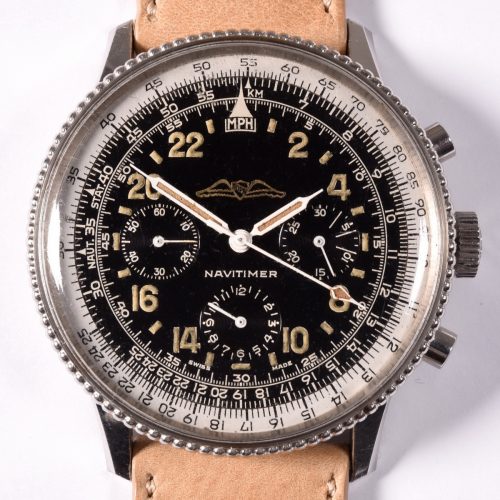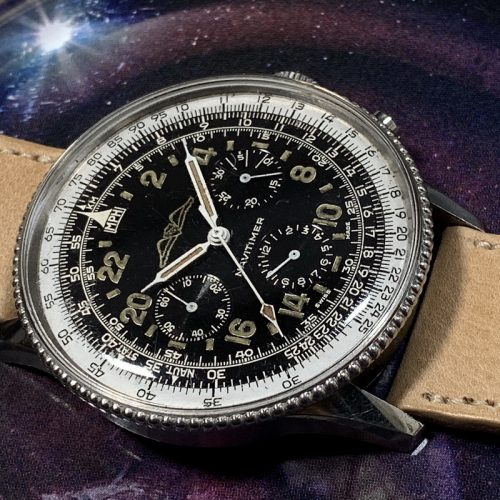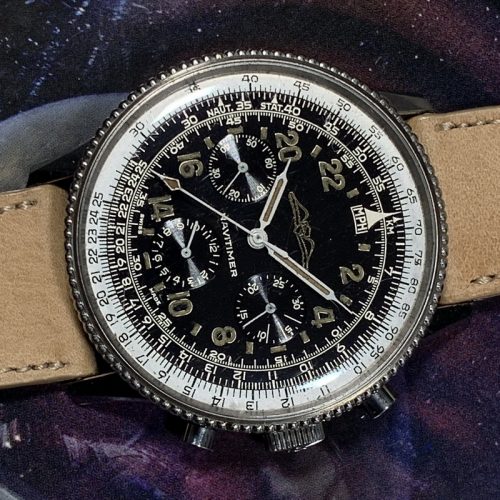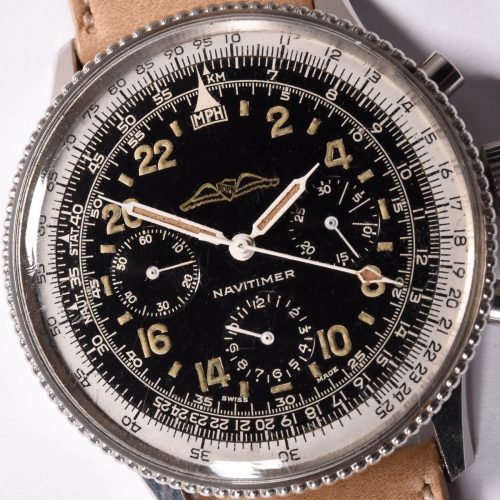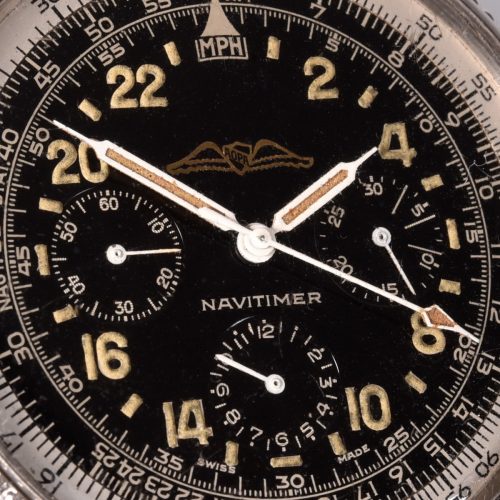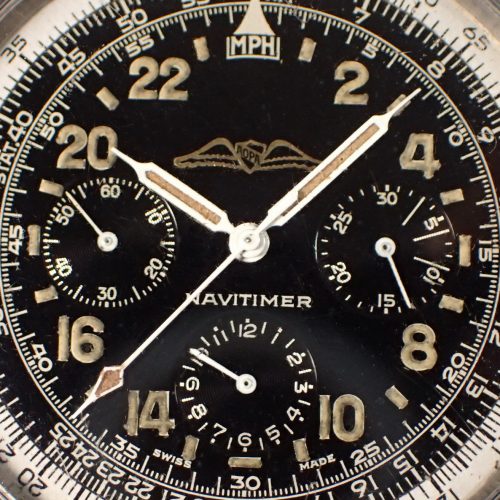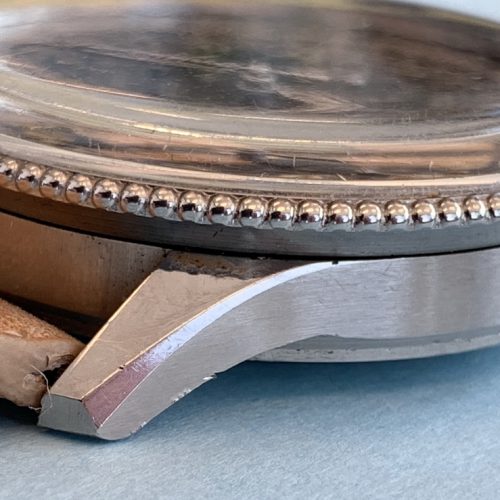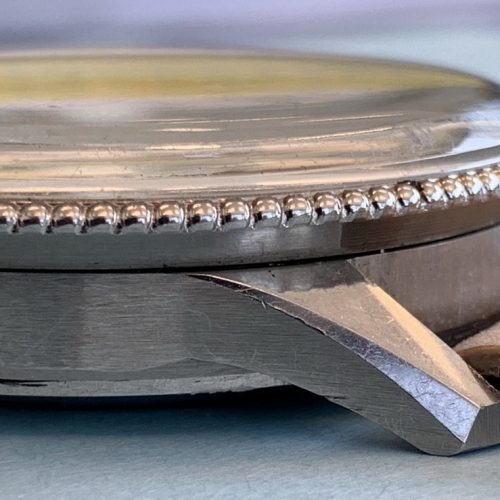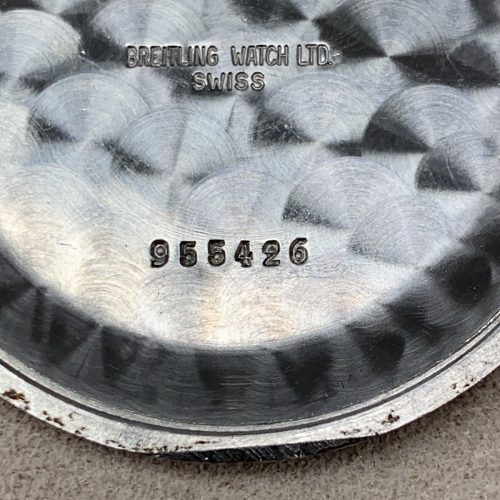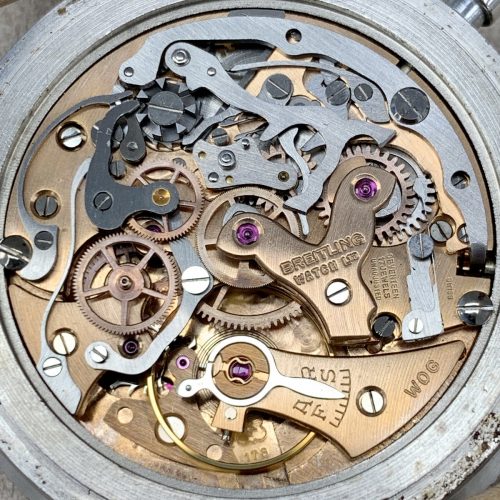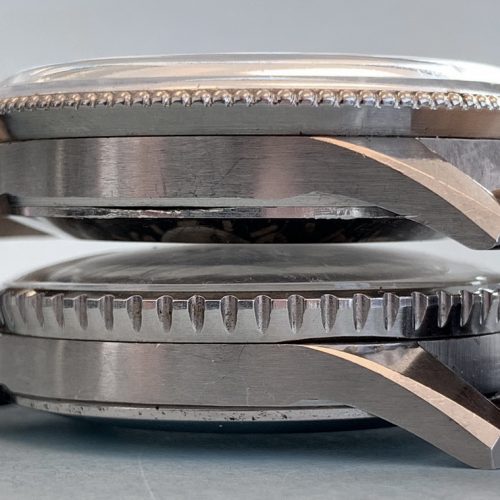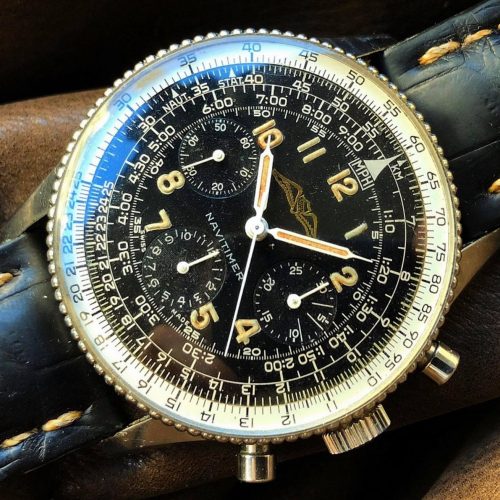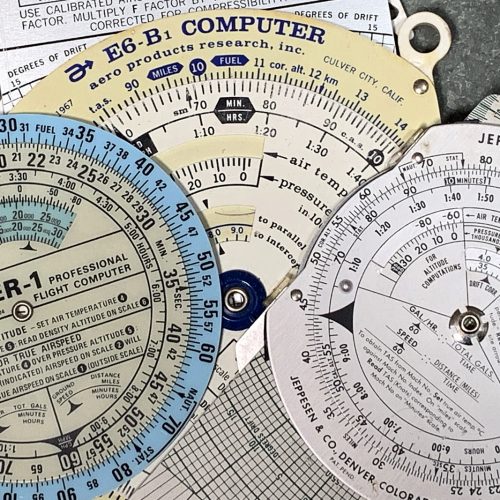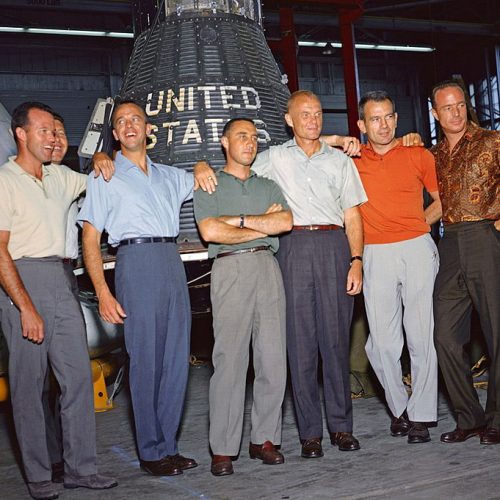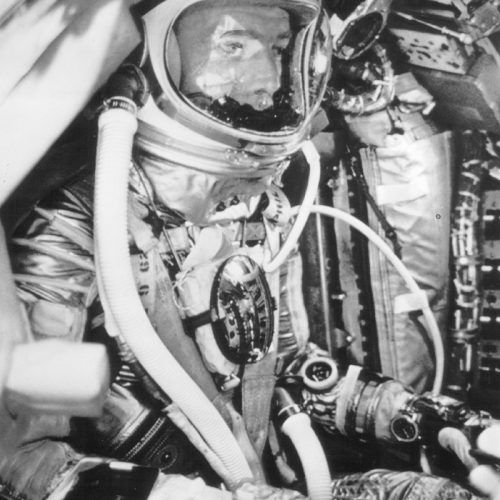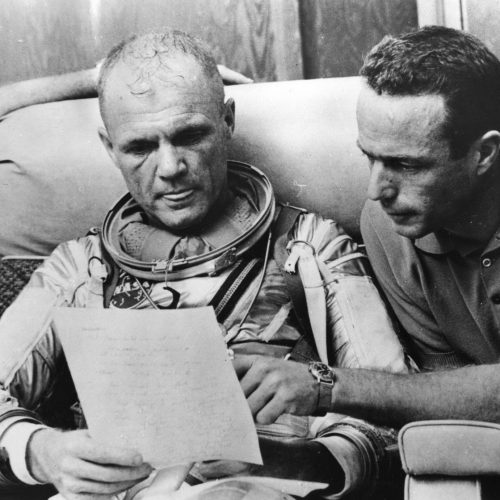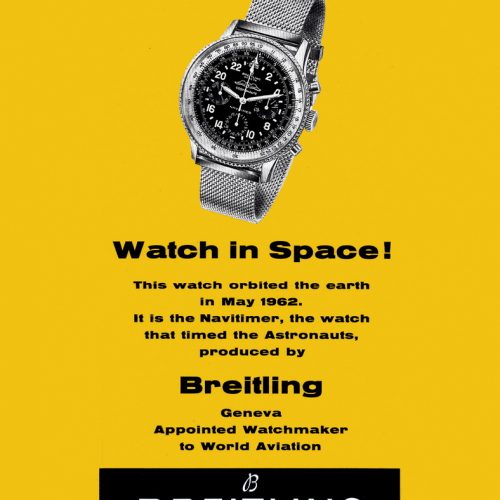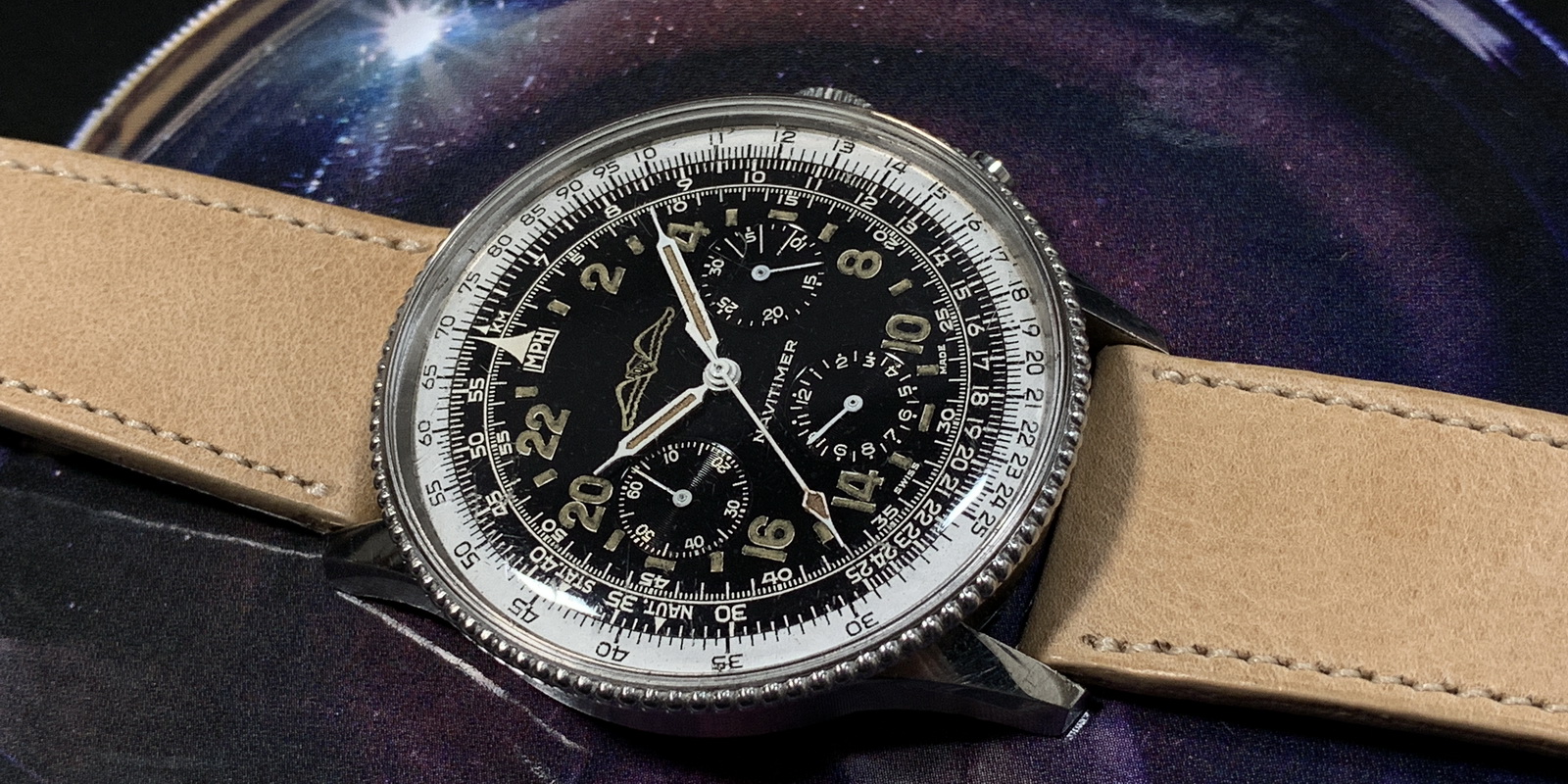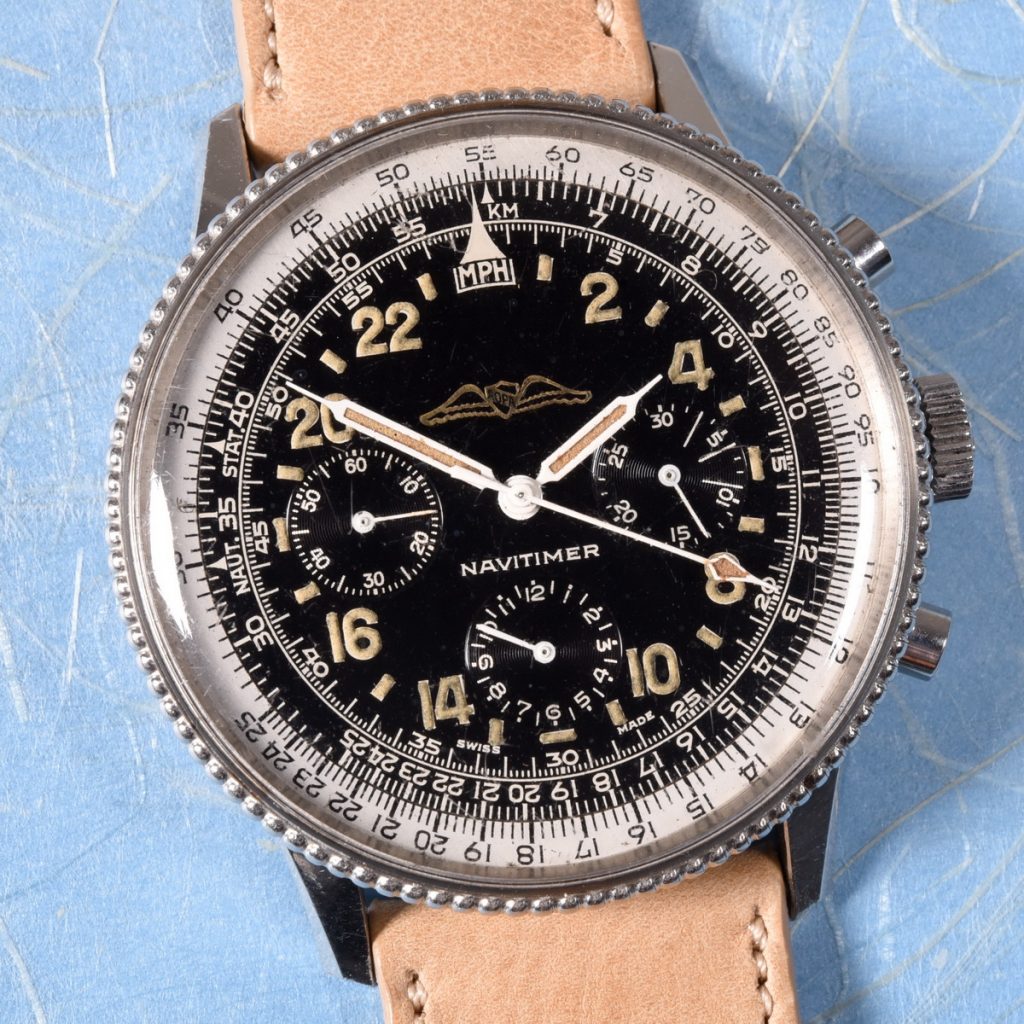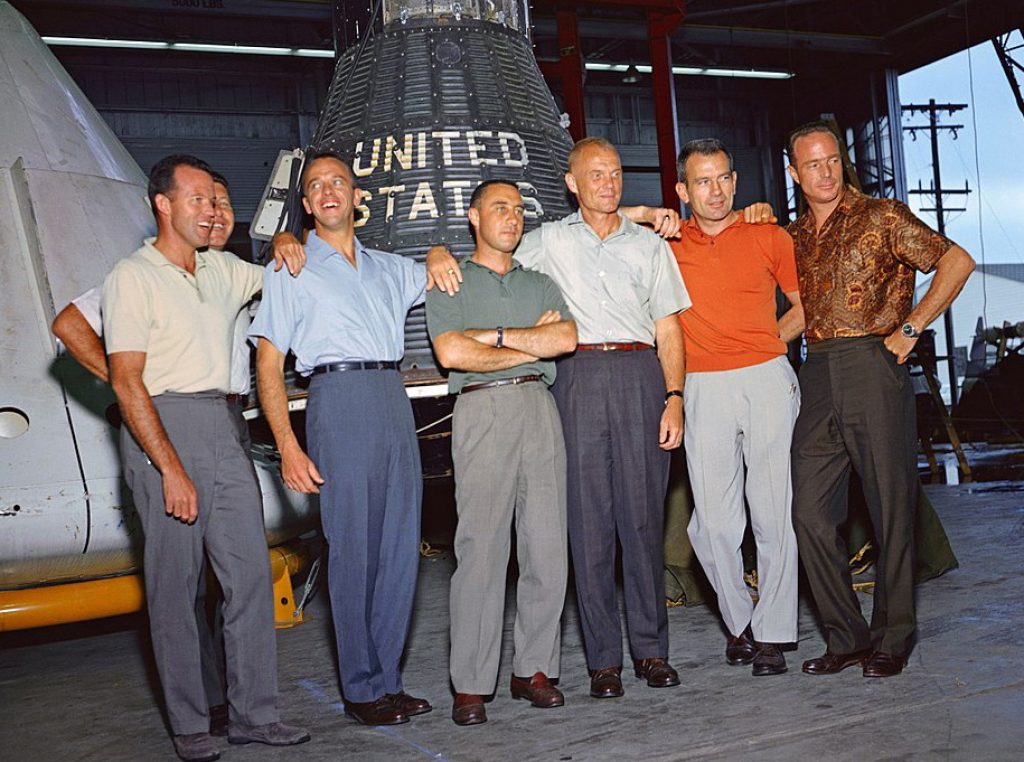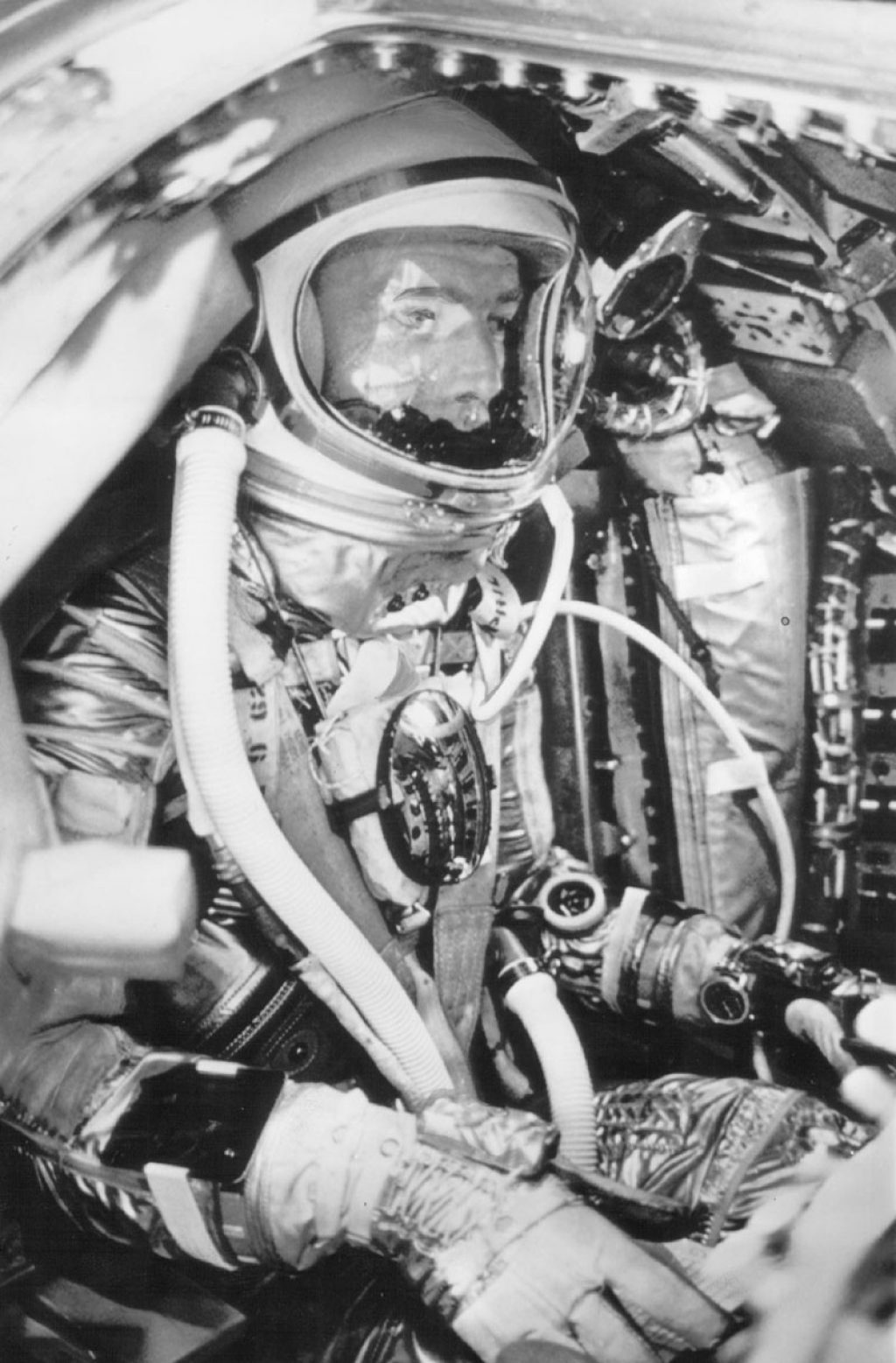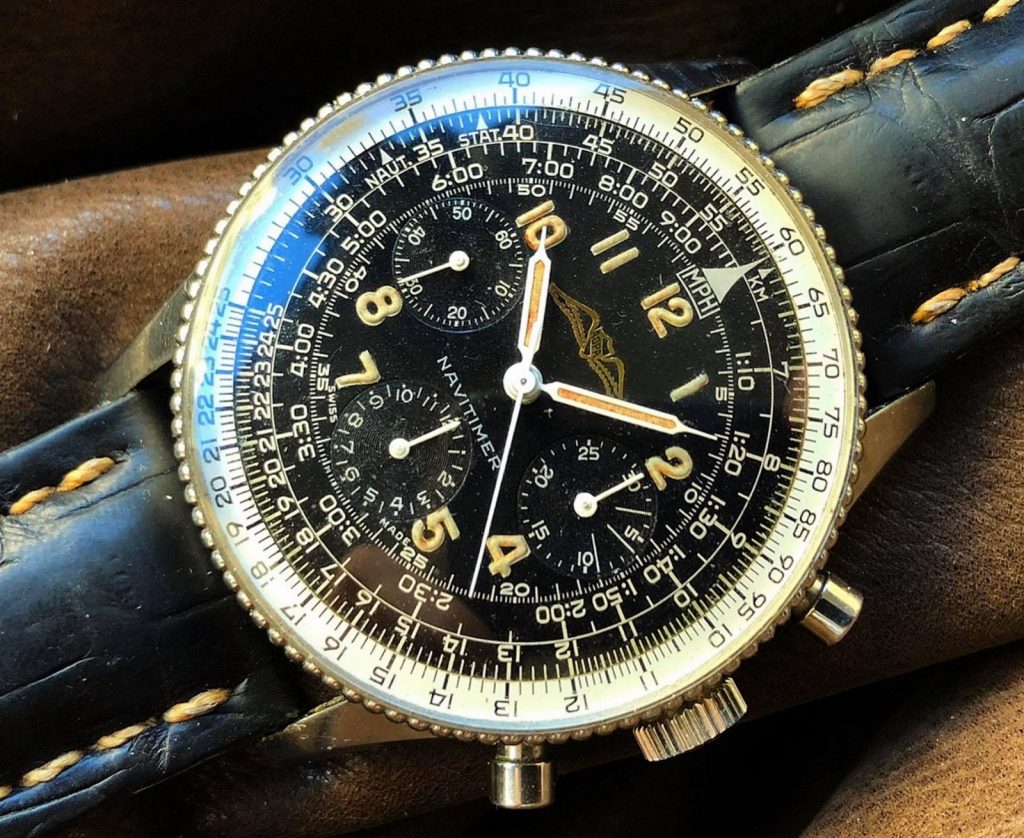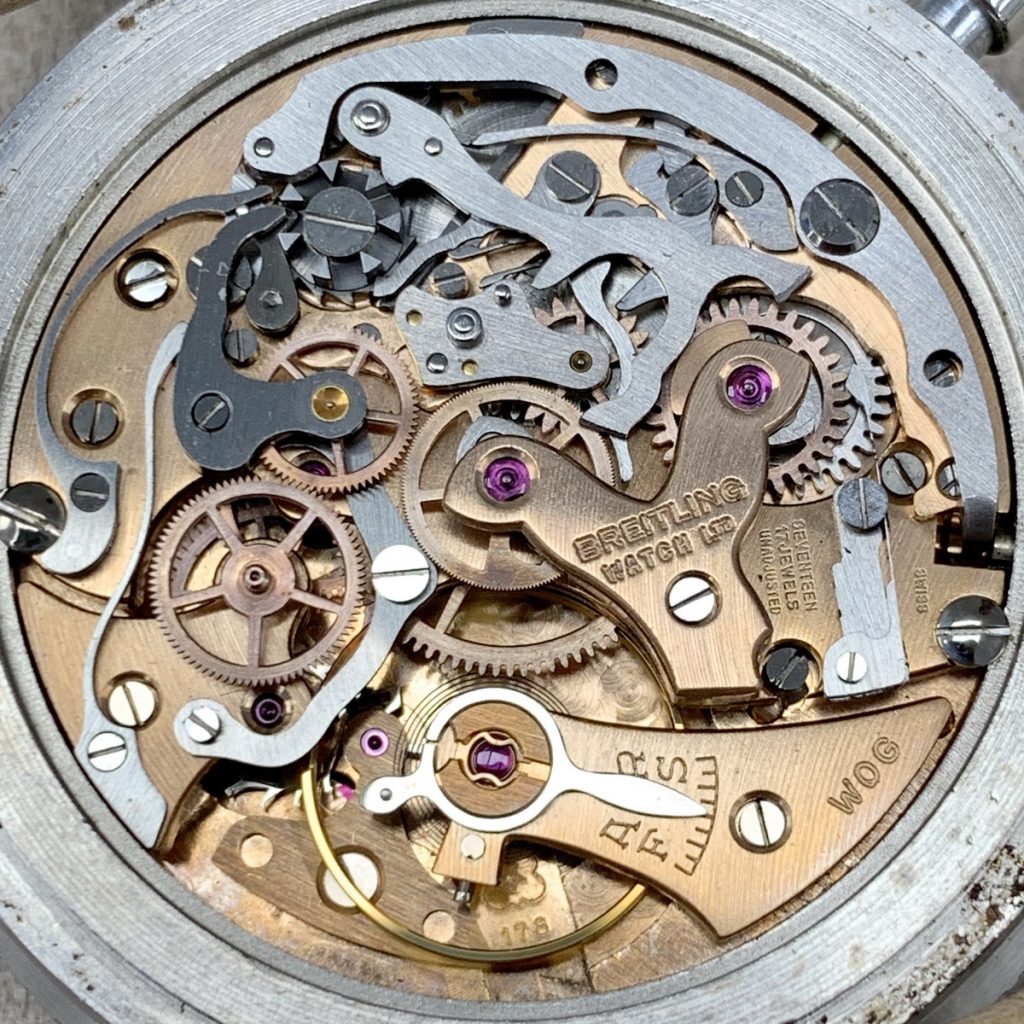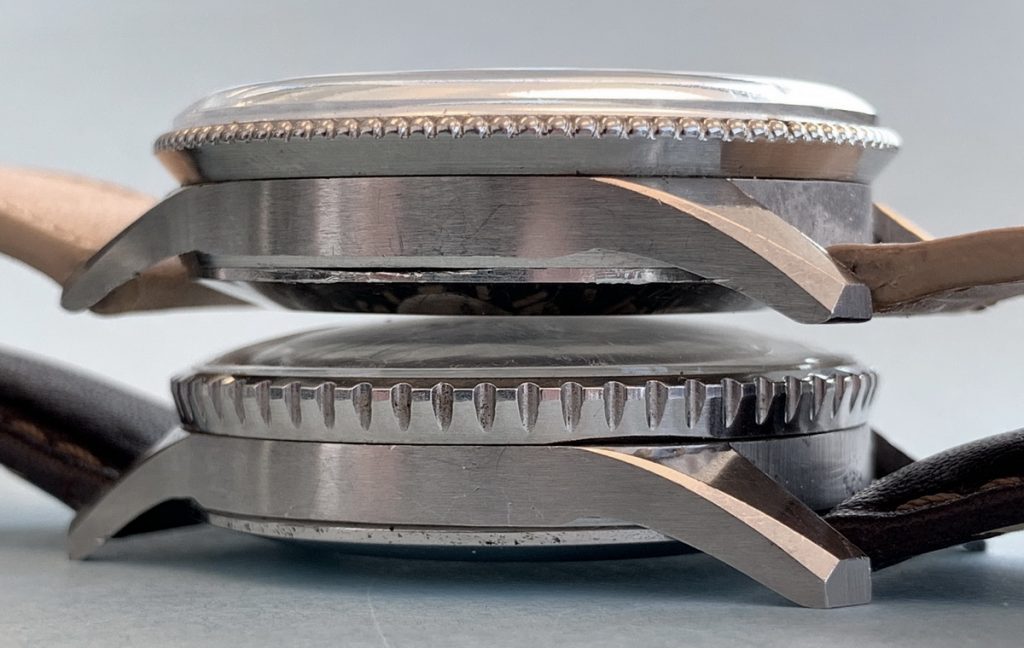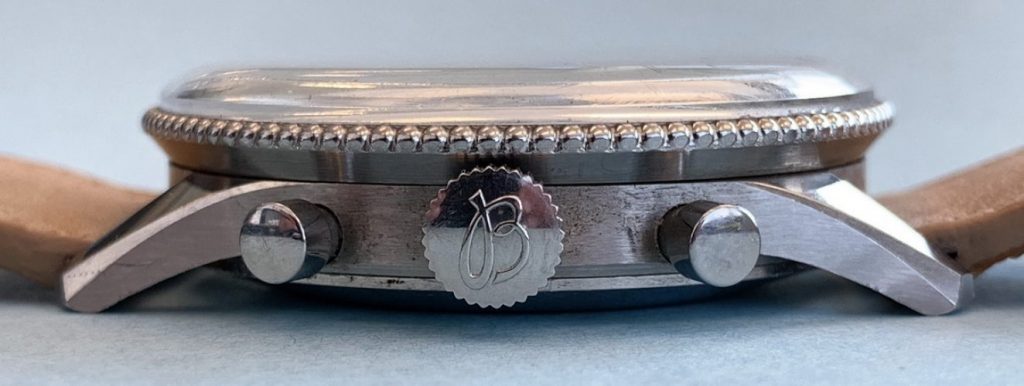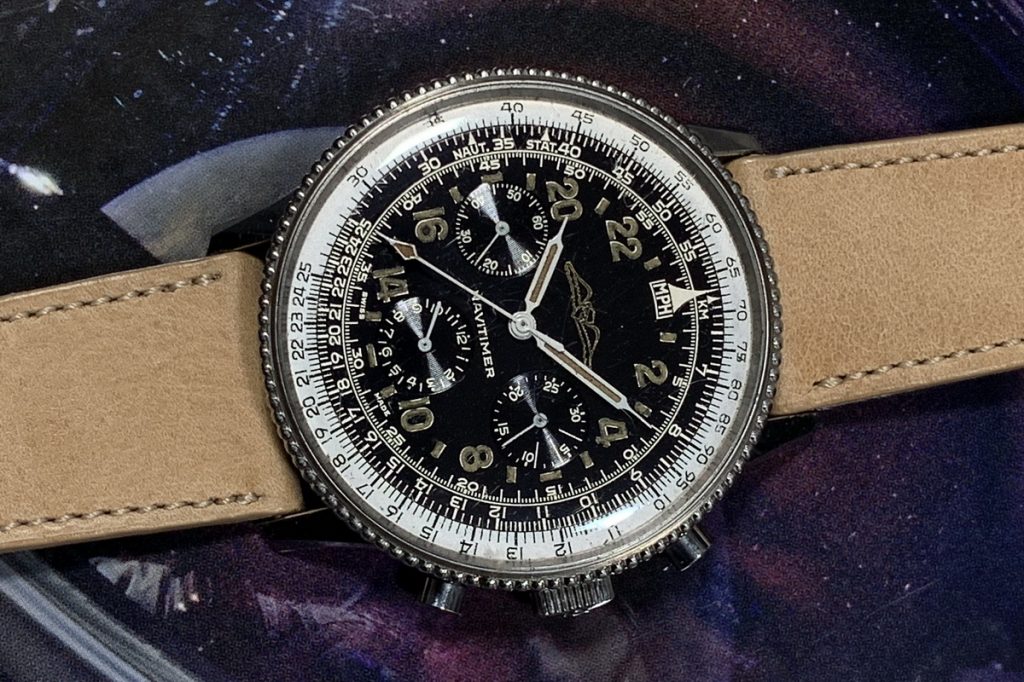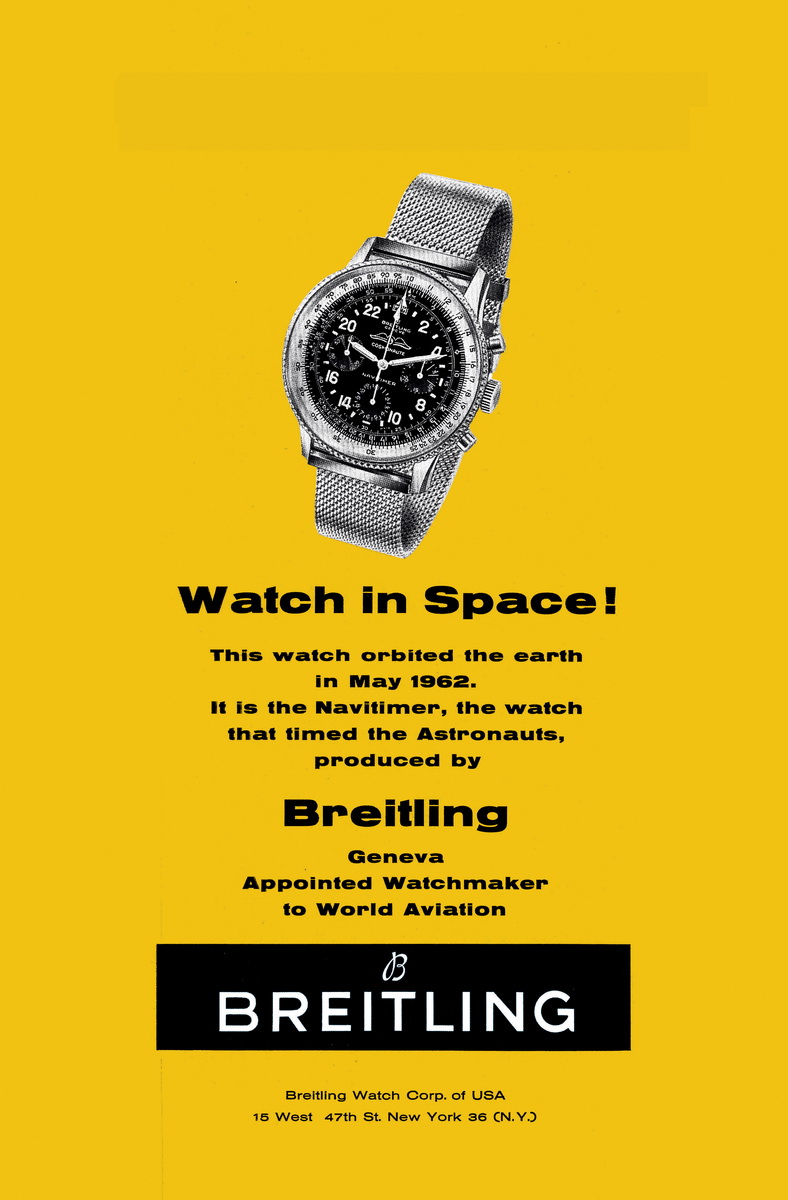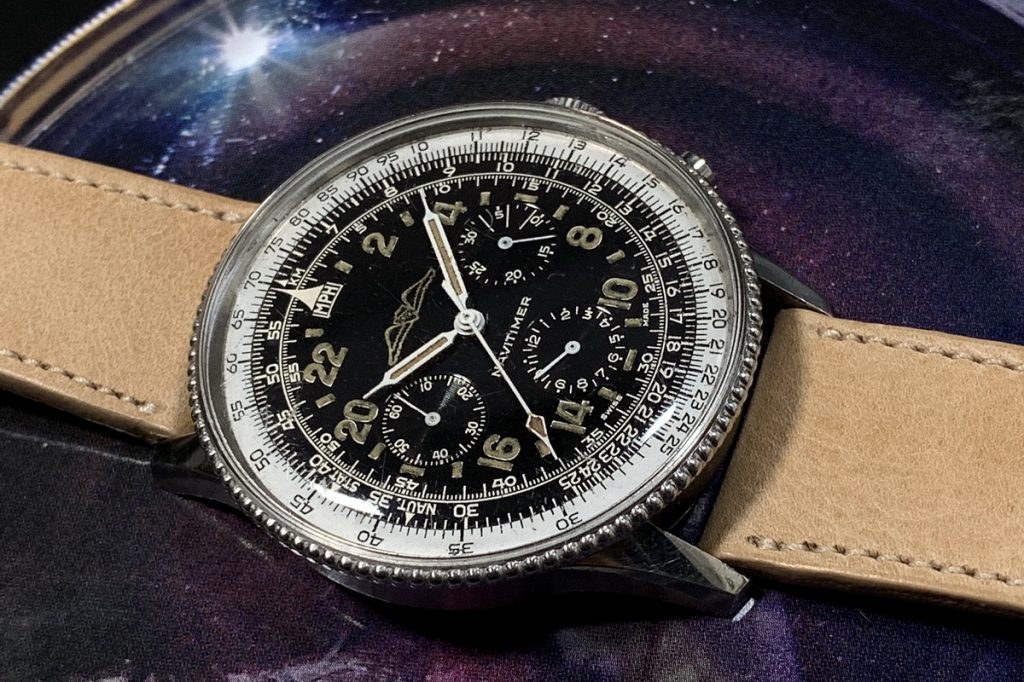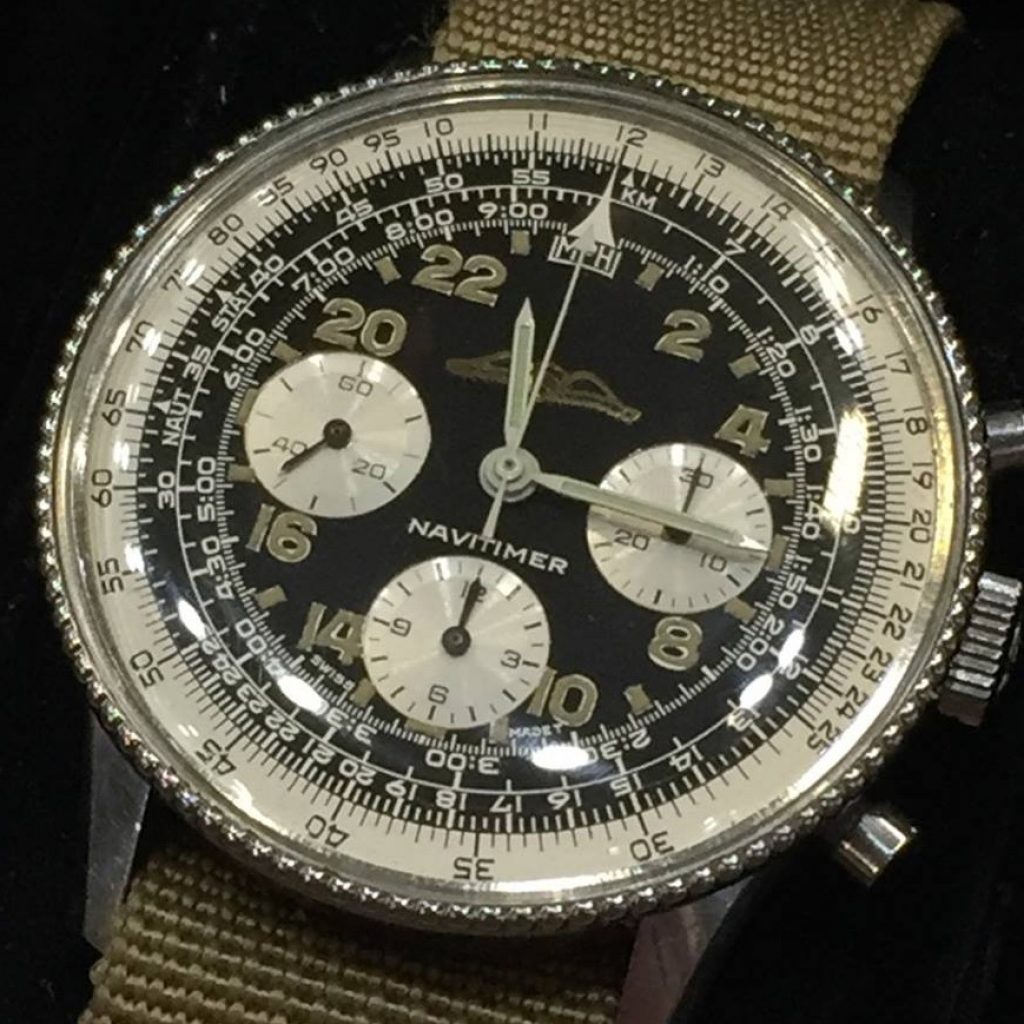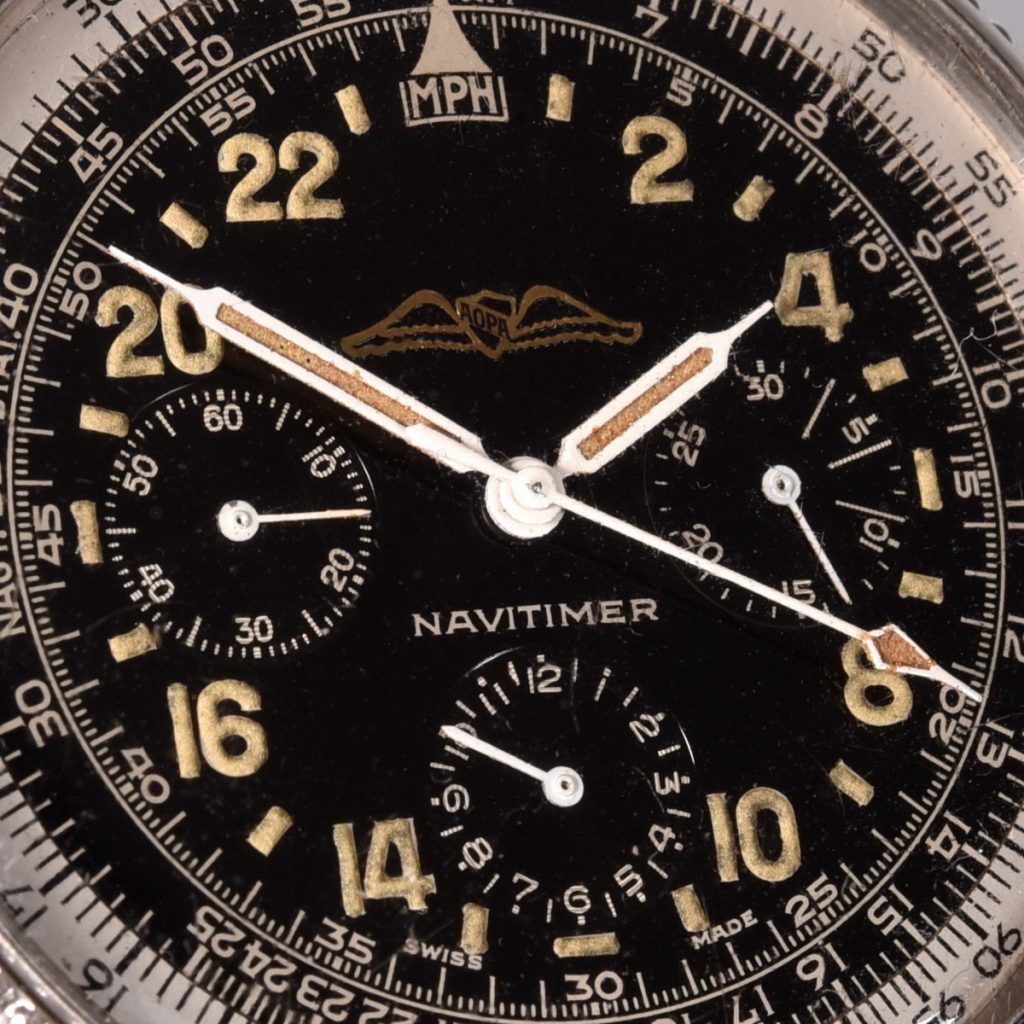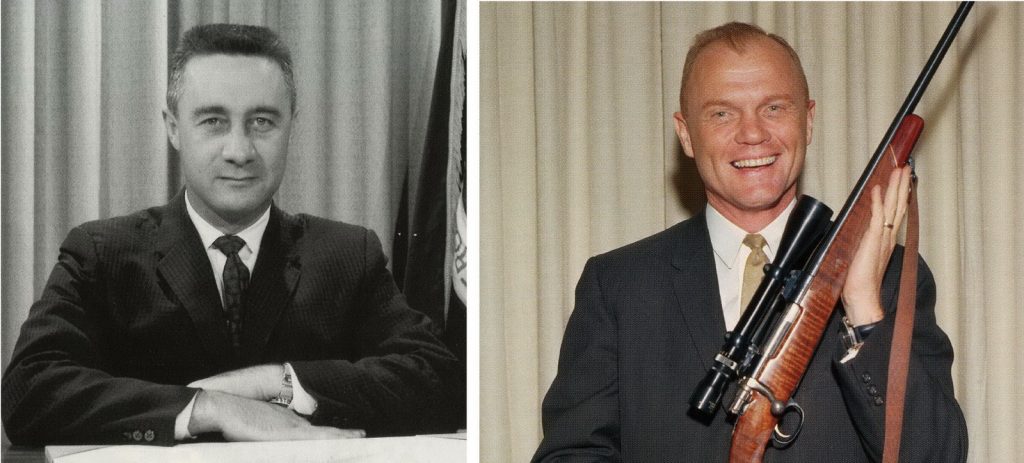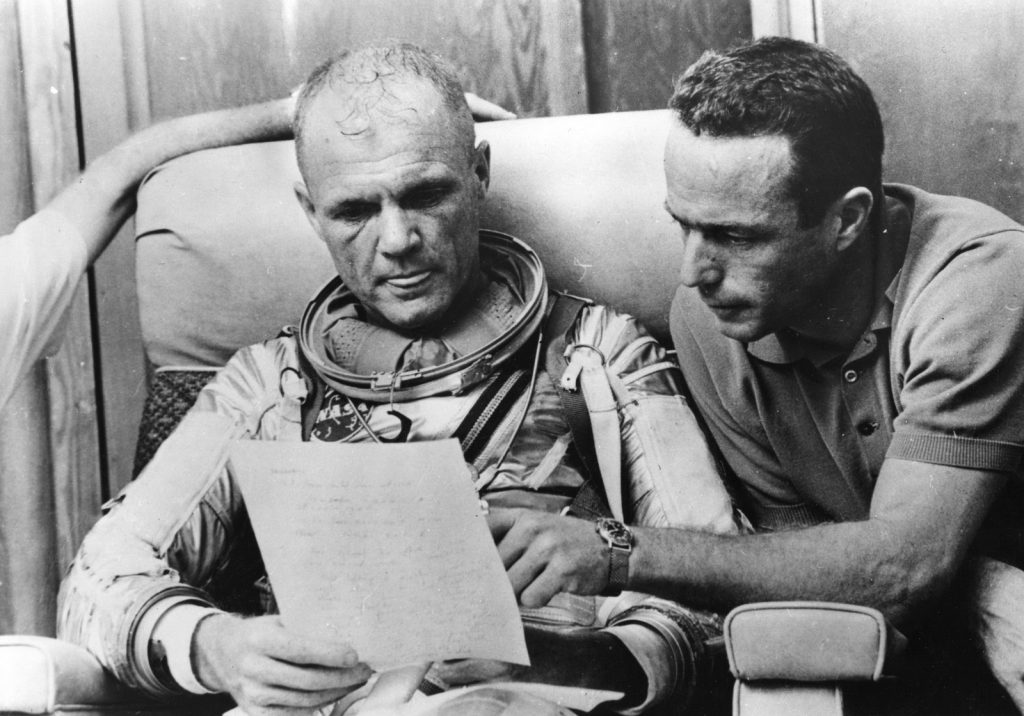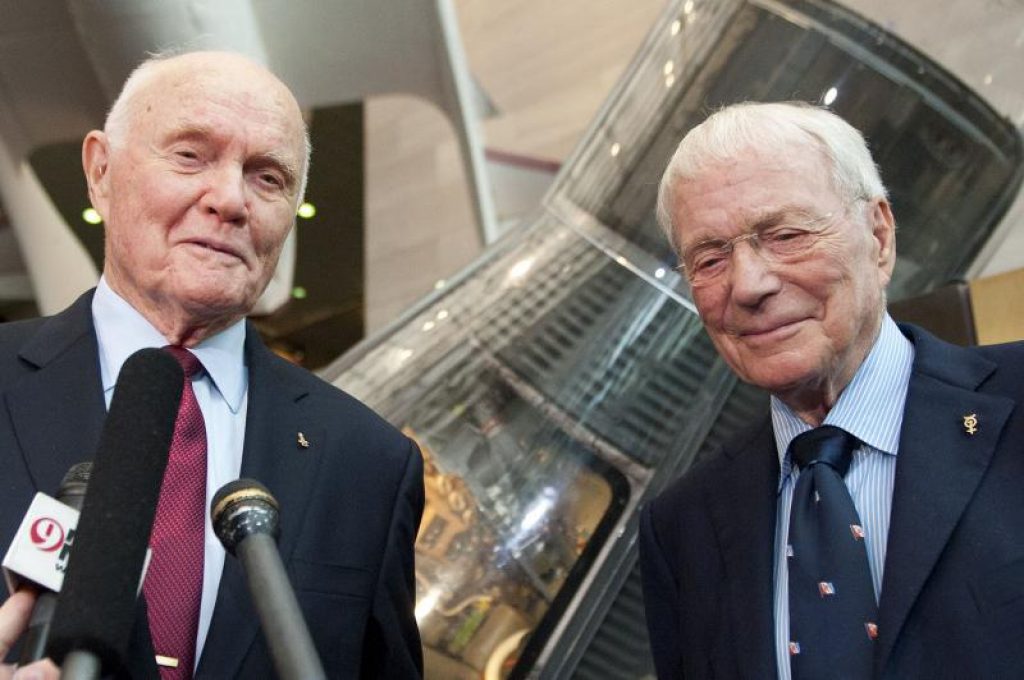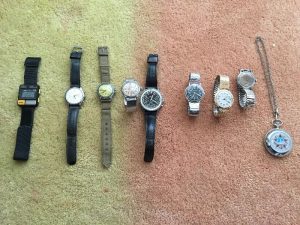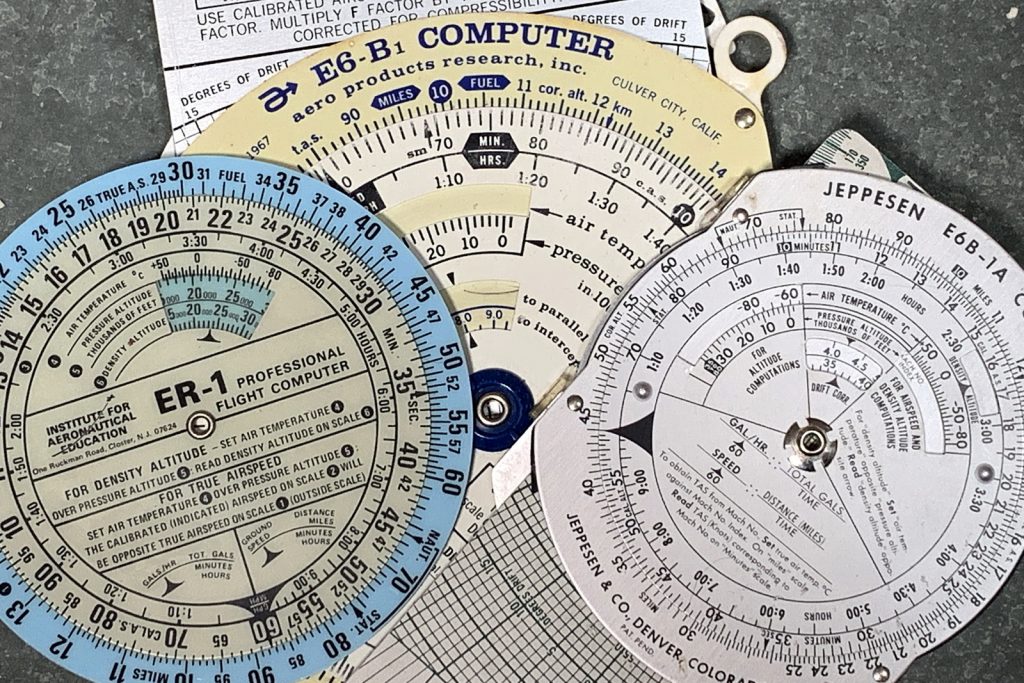In our “Noteworthy Watch” postings, we cover some watches that may be particularly interesting to collectors. In today’s posting, we cover a watch that I have just added to my collection, the Breitling Cosmonaute, Reference 809, as worn by Mercury astronaut Scott Carpenter. Carpenter flew the Mercury-Atlas 7 flight, on May 24, 1962, becoming the second American to orbit the earth. This Breitling Cosmonaute was the first Swiss wristwatch or chronograph worn in space. John Glenn had worn a Heuer stopwatch, strapped to his wrist, on his Mercury Six flight, on February 20, 1962.
These “Notes” are not intended to be comprehensive descriptions of the watches that they cover. Rather, we cover some interesting features of the watch and its place in vintage watch history.
Background
Scott Carpenter (below, on the right) was one of the original seven US astronauts, sometimes called the “Mercury Seven”, introduced to the public in April 1959.
Carpenter was a US Navy test pilot and it is reported that he was fond of the Breitling Navitimers, a three-register chronograph, designed for pilots, which incorporated a slide rule and other scales and markings useful for navigation. Like most wristwatches, the Navitimer had 12-hour indication, meaning that the hour hand rotates around the dial two times per day. Each of the seven Mercury astronauts had a special responsibility for the development of the Mercury spacecraft and Carpenter was given responsibility for the onboard navigational equipment. (By way of example, Alan Shepard focused on recovery of the astronauts upon landing and egress from the capsule and John Glenn focused on optimizing the cockpit and the flight simulator.) The story is told that Carpenter was happy that chronographs for the astronauts would be within his realm!
Scott Carpenter flew the Mercury-Atlas 7 mission on May 24, 1962. Similar to Glenn’s flight, Carpenter completed three orbits of the earth, spending approximately 4 hours and 40 minutes in space. Carpenter landed in the Caribbean, approximately 250 miles from the intended landing point. It took over an hour of frantic searching for U. S. Navy vessels to locate Carpenter, floating in his life raft. Unfortunately for the Breitling enthusiasts, during the recovery at sea, Carpenter’s arm was submerged in the water, and his watch suffered severe damage. The watch was sent to Breitling for repair and public sources suggest that the current whereabouts of the watch are unknown.
There was considerable debate within NASA regarding the errors that occurred toward the end of Carpenter’s flight, with some NASA officials blaming Carpenter and Carpenter attributing most of the problems to mechanical or computer failures. In any event, Mercury Flight Director Christopher Kraft declared that that Scott Carpenter would not fly another mission in space, and this turned out to be the case. Carpenter left NASA in 1967.
In addition to exploring the skies, Scott Carpenter was very interested in the oceans. In 1965, he spent a month living and working on the ocean floor off San Diego at a depth of 205 feet, as part of the Sealab project.
Development of the Cosmonaute
Being the Mercury astronaut who focused on onboard navigational equipment, and himself a Breitling Navitimer enthusiast, the story goes that Carpenter requested that Breitling modify the Navitimer so that it would be suitable for the astronauts. At this time, NASA had not selected a watch to be worn on the Mercury flights and NASA was not supplying watches to the astronauts, but rather each of the astronauts who chose to wear a watch on his mission selected and procured his own timepiece.
In the late 1960s / early 1970s, the Navitimer was a three-register chronograph, with a black dial and black registers, and three slide rule scales. It appears that Carpenter requested that Breitling make three major modifications to the Navitimer to make it a better instrument for the Mercury astronauts, as follows:
24-Hour Indication.
Rather than having 12-hour indication, as on most wristwatches, the Cosmonaute would have 24-hour indication. For the astronaut completing an orbit every 90 minutes, and moving from daylight to darkness in a matter of minutes, the 24 hour indication would allow the astronaut to know the time of day (for example, at Mission Control), without worrying about whether it was AM or PM.
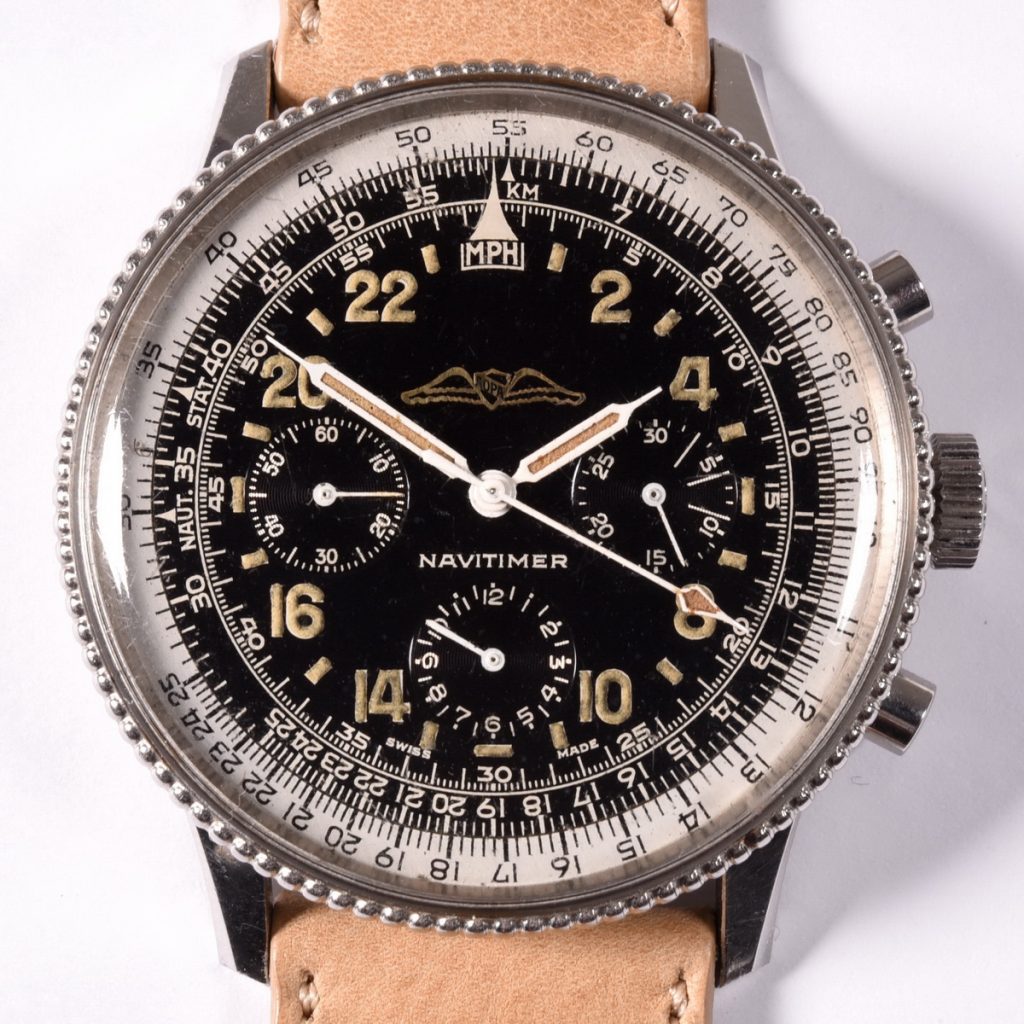
The movement used in the Cosmonaute was the same Venus 178 as was used in the Navitimer, except that the movement was modified so that the hour hand would make only one trip around the dial per day.
Wide Bezel.
So that the slide rule could be used by an astronaut wearing thick gloves, the Cosmonaute (shown below, with a later execution) would have a wider bezel than the previous and future models.
Comparing the bezel of the “Scott Carpenter” Cosmonaute to the bezel of the standard Reference 806 Navitimer, circa 1962, shows that the Scott Carpenter bezel measures approximately 42.5 millimeters across, from one side to the other, while the standard Navitimer bezel was approximately 40.5 millimeters across.
Simplified Slide Rule.
The Navitimers were designed specifically for pilots and from their introduction in 1954, the Navitimers had three scales, two printed on the dial and one in the rotating bezel. The two standard slide scales [known as the C and D scales], allow for multiplication and division. The third scale printed on the dial of the Navitimer was an Hours / Minutes scale (HH:MM), used to make time / distance computations. This third scale translates minutes (shown on the inner slide rule scale) to hours, which are shown in HH:MM format. (For example, if a car is travelling at 74 miles per hour, how many miles will it cover in 3 hours and 30 minutes? Or if a plane is flying at 180 miles per hour, how long will it take to fly 500 miles or to burn a given amount of fuel?)
When Carpenter requested that Breitling modify the Navitimer, to make it more useful for the astronauts, he requested the deletion of this HH:MM scale, as this scale would be of no use to the astronaut orbiting the earth. Deletion of this third scale would allow more room for the numerals marking the hours and improve the legibility of the watch and its slide rule scales, by making the dial less “busy”.
In this posting, we refer to any Breitling Cosmonaute that meets these criteria as a “Scott Carpenter” Cosmonaute. Specifically, the watch will have an all-black dial, syringe hands, a wide bezel and only the two basic slide rule scales (C and D).
Some Cosmonaute Trivia / Teasers / Mysteries
While collectors use the term “Cosmonaute” to describe any of the three register, slide rule chronographs with 24-hour indication made by Breitling in the 1960s, many of the earliest samples of these chronographs did not say “Cosmonaute” on the dial. Instead, they were marked “Navitimer” across the bottom. And for that matter, many of these first Cosmonautes weren’t marked “Breitling”, but had only the “AOPA” (Aircraft Owners and Pilots) logo across the top of the dial.
Other “Scott Carpenter” models were marked “Breitling” and “Cosmonaute”, as we might have expected It is far beyond the scope of this note to attempt to unravel all these variations.
Small Batch of the Early Cosmonautes.
It appears that the execution worn by Scott Carpenter — with the wide bezel, black registers and syringe hands — was made for a relatively brief period. Soon after the production of these Cosmonautes, the registers were changed to contrasting white and the syringe hands gave way to lume-filled baton hands, as shown below. We also see all-black AOPA Cosmonautes from 1963, with the standard-width bezel and syringe hands, with this execution being exceedingly rare.
The Unique Hour Hand.
With the deletion of the time scale (HH:MM) on the “Scott Carpenter” Cosmonaute, it appears that the numerals for the hours are placed further away from the center of the dial. This may explain why the hour hand on the Scott Carpenter Cosmonaute is longer than the hour hand on Navitimers of the period. With the third scale on the dial, the numerals of the Navitimer are closer to the center of the dial, allowing the use of a shorter hour hand.
Mercury Astronauts Wearing Cosmonautes.
A close review of photos from NASA and other media suggests that several of the Mercury astronauts wore the “Scott Carpenter” Cosmonautes. We are certain that John Glenn and Gus Grissom owned “Scott Carpenter” Cosmonautes, and it appears that Wally Schirra also wore the watch.
We have to wonder how the other astronauts received their Cosmonaures – as gifts from Breitling? As gifts from Carpenter? Or from some other source.
Scott Carpenter and John Glenn
Within the seven Mercury astronauts, we can imagine that there were pairings of astronauts who were close friends, as well as astronauts who did not get along so well with each other. In a group of seven high-achieving, competitive individuals, such alliances and rivalries are natural.
It seems that Scott Carpenter and John Glenn had a close friendship, both when they were Mercury astronauts and in their lives after NASA. Carpenter and Glenn were regarded as being a bit more compliant or conservative than some of the other Mercury astronauts, who might have conveyed the image of the crazy, reckless test pilots.
Carpenter was the backup pilot for Glenn’s Mercury-Atlas 6 mission and served as capsule communicator for that historic flight. Upon Glenn’s lift-off, Carpenter says, “Godspeed, John Glenn”. [Ironically, their communications equipment was operating on different channels at the time, so Glenn didn’t hear this good wish, until he listened to the tapes, after his flight.] It is interesting that neither Carpenter nor Glenn flew again, in the Mercury / Gemini years, Carpenter because of some politics with the program administrators and Glenn because NASA did not want to take any risk that this great hero could be lost in a subsequent flight.
John Glenn’s “Scott Carpenter” Cosmonaute.
The “Scott Carpenter” Cosmonaute that was owned by John Glenn was sold in the estate sale conducted by his family, at the Glenn home in Potomac, Maryland, in March 2018. The estate sale was handled by a local company, with no online catalog or online sales. Shown below is a photograph, from the estate sale company, showing the nine watches that were included in the estate sale. It’s not too difficult to pick the Cosmonaute out of this line-up!
Rumors suggest that John Glenn’s Breitling Cosmonaute will soon be offered by a major auction house.
The Flight Computers.
With the three scales, two for the basic slide rule functions (multiplying and dividing) and one for time / distance computations (HH:MM), the Navitimers and Cosmonautes can be viewed as relatively simple flight computers. When we examine the “whiz wheel” flight computers in common use in the 1950s and 1960s, we see that all these computers begin with these same three scales. On each of the flight computers shown below, the two outer scales are the C and D scales, and the third scale is the HH:MM scale.
Additional References
A beautiful tribute to Scott Carpenter, written by his daughter — Scott Carpenter’s Grand Adventure

NASA Summary of Carpenter’s Mercury-Atlas 7 mission.
Obituaries for Scott Carpenter, in The New York Times and Revolution
An interesting posting about how Scott Carpenter helped develop the Cosmonaute and his use of the watch on his flight — Breitling Models New Timepiece After Missing Historic Space Watch
Circular Slide Rule Watch Tutorial provides an excellent introduction to the watches that incorporate slide rules.
Thanks
Thanks to Rob Cooper for finding the amazing “Scott Carpenter” Cosmonaute that is featured in this posting, and selling it to me on reasonable terms. You have been sourcing some amazing Breitlings lately. Let’s get on to the next one!! Readers can follow Rob on Instagram — @timewaits_4no1
Thanks to Fred Mandelbaum, and the rest of the Breitling Boys [you know who you are!] for the education about Breitling watches and the encouragement / inspiration to go after some of the good ones. Be one of the over 50,000 enthusiasts following Fred on Instagram — @WatchFred
Jeff Stein
August 15, 2019
